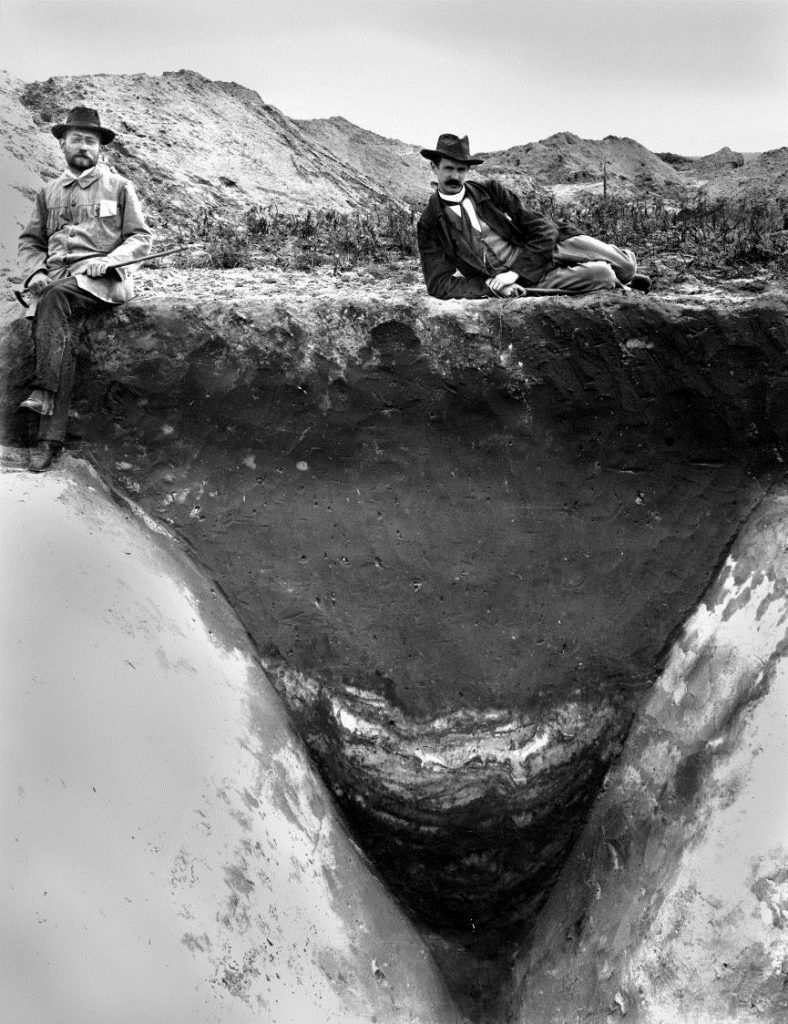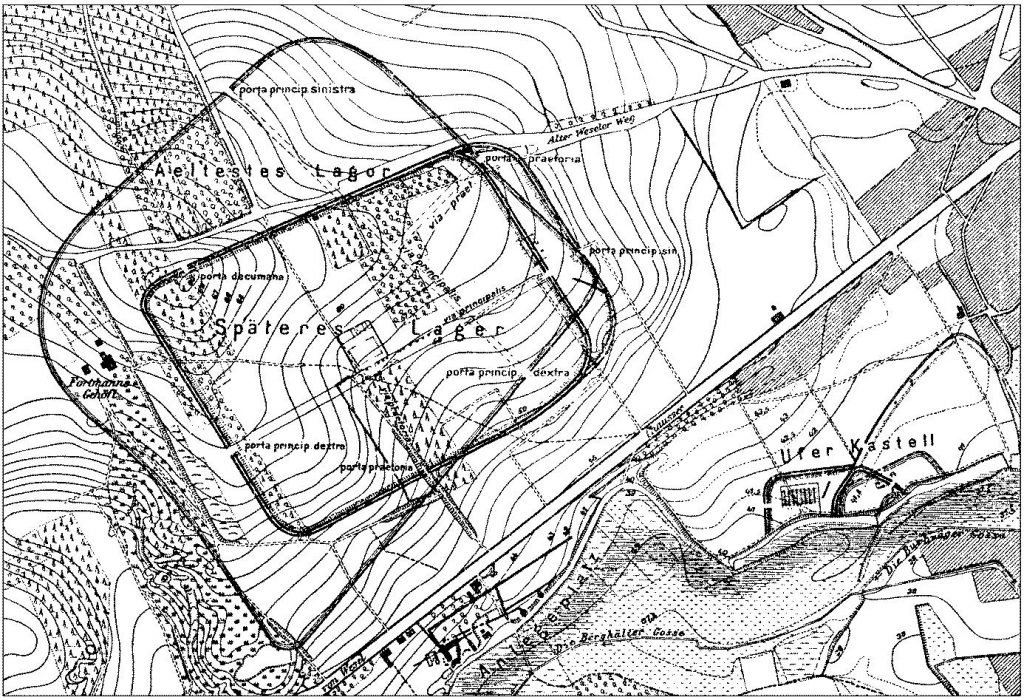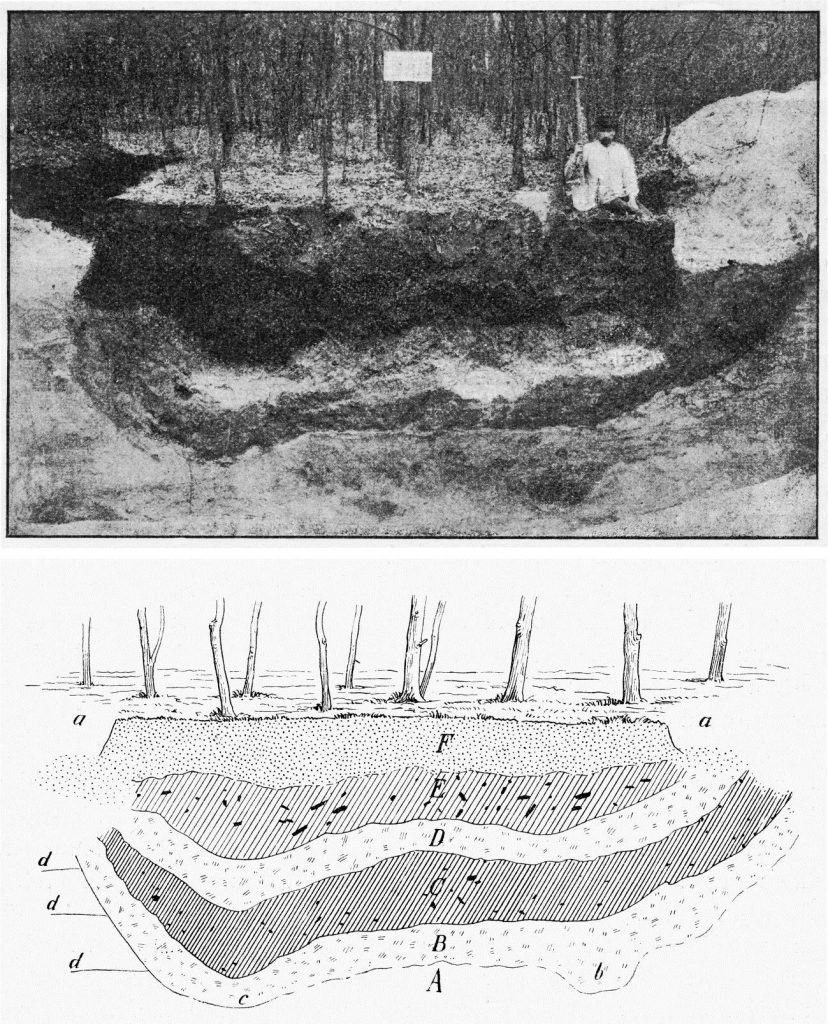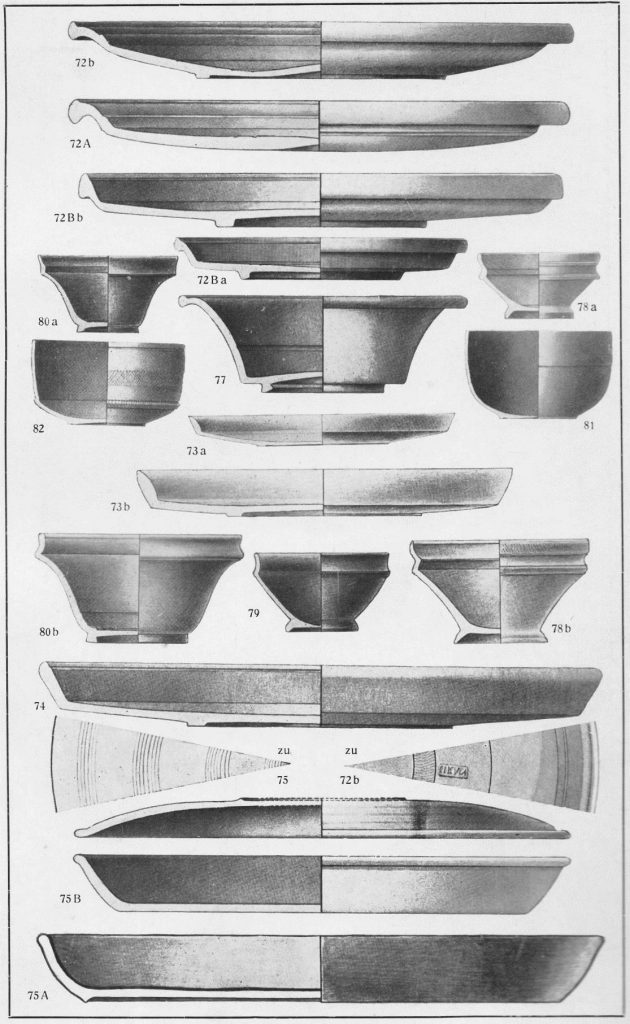In the late 19th century Roman finds were made, and subsequently a series of forts identified, along the river Lippe in Westphalia. The Roman finds from Haltern am See near Recklinghausen, in particular, would go on to play an important part in the further development of the Romano-Germanic Commission of the DAI at Frankfurt. As the Haltern finds became famous across Germany, Alexander Conze was able to use them to push for the foundation of the RGK (see blogpost Day 90 The Romano-Germanic Commission). The banks of the river Lippe were investigated in the autumn of 1899, the work published in 1901 [https://sammlungen.ulb.uni-muenster.de/hd/periodical/structure/1269008]. The list of authors of this first report provides a taster of the role Haltern would have for the new institution: it includes two founding members of the RGK, as well as two of its later directors: Friedrich Koepp, Georg Loeschke, Emil Ritterling and Carl Schuchhardt.

The RGK carried out research at the forts of Oberaden and Kneblinghausen south of Lippstatt; the focus of attention, however, was always on Haltern. In the early years of the 20th century, the first Director of the RGK, Hans Dragendorff (1870-1941) [https://sempub.ub.uni-heidelberg.de/propylaeum_vitae/de/wisski/navigate/2942/view] spent several years excavating at the site. RGK excavations at Haltern were carried out until 1912/1913 and published in a report by the new director, Friedrich Koepp (1860-1944). Hans Dragendorff published three extensive papers on the Roman period in Germany in which he summed up the work along the Lippe and the Haltern excavations in particular. During the ten years of excavations, several Roman forts, as well as the riverside structures identified as “Uferkastell” and “Anlegeplatz” were identified at Haltern and studied in detail.

With the Haltern excavations, the RGK developed new standards in excavation, particularly so in terms of the identification and study of features identifiable only as soil discolourations: the yellow sandy soils with clearly defined dark features provided ideal conditions for the development of new methods. Haltern was long termed a German “archaeology school” and can be seen as a centre for the early teaching and learning of methods to excavate post holes. The work at Haltern also set benchmarks for the publication of ceramics and coins that remained influential in research on the Roman Provinces for decades. Even today, the publications of the “Lippelager”, the forts along the river Lippe, remain key sources for the chronology of Augustan assemblages across the Roman Empire.

Documentation of a ditch at Haltern with drawn stratigraphy (C. Schuchhardt, das Römerkastell bei Haltern an der Lippe. Sitzungsberichte der königlich preussischen Akademie der Wissenschaften zu Berlin XIX, 1900, Gesammtsitzung vom 5. April) 
Publication of terra sigillata vessel types from Haltern, 1909 (S.Loeschke, Keramische Funde in Haltern. Ein Beitrag zur Geschichte der augusteischen Kultur in Deutschland. Münster 1909, Tafel X)
Through its involvement at Haltern, the RGK established a research focus on the early Roman period and the so-called Augustan Occupation in particular. With the research project at Waldgirmes, the institute returned to this field of research. Current projects on the Danube investigate the same themes and phenomena. In this way, the RGK at Frankfurt continues to study and to develop overarching research questions on the early development of Roman border zones.